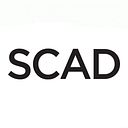Start your Semester off with a Great Book!
“Reading is not a destination, but a process of becoming and being,” declares Dr. Nicole Blackwood, professor of art history. “A good book continues to form and create new ideas within you even after the final word is read.”
Renowned for her walking tours of Savannah, Dr. Blackwood is an associate member of the Appraisers Association of America, and founder and director of the Savannah-based art advising and appraising firm D I S E G N O, LLC. Her book selections are all written by artists, or by those she would call friends.
Molly Peacock, Paper Garden: Mrs. Delany Begins Her Life’s Work at 72, (Bloomsbury, 2010): “Mary Delany was seventy-two when she invented the art of collage, cutting paper-thin tissue into a perfect replica of a geranium; she would go on to make nearly one thousand papercut flowers before her death in 1788. Peacock, a poet herself, weaves together her life as a contemporary writer and that of this extraordinary eighteenth-century woman, articulating how the past and present speak to each other, literally and metaphorically.”
Edmund de Waal, The Hare with Amber Eyes: A Hidden Inheritance (Farrar, Straus and Giroux, 2010): “As an art historian, I’m fascinated by how objects tell stories. In this autobiographical tale, the contemporary ceramicist De Waal traces the story of a collection of Japanese wood and ivory carvings called netsuke that he inherited from his great-uncle. Moving from the empire of Odessa to fin de siècle Paris, from occupied Vienna to postwar Tokyo, De Wall unravels a dramatic story of family and self through little objects that can fit in the palm of a hand.”
Zara Anishanslin, Portrait of a Woman in Silk: Hidden Histories of the British Atlantic World (Yale, 2016): “This book encapsulates how entire worlds can be revealed through the examination of a singular painting. Using one picture as her starting point, Anishanslin unravels the complex interconnections between things both pictured and made. Through an image of a single silk dress, a new appreciation for the complexity and serendipity involved in the creation of any fabric is spun.”
Anita Albus, The Art of Arts: Rediscovering Painting (University of California Press, 2000): “This book completely changed how I thought about and approached early Netherlandish oil painting and the world of Jan van Eyck. Upon first seeing the brilliant work of van Eyck in a dimly-lit classroom during my undergraduate studies in Canada, I decided I wanted to study art history. But it was this book, read many years later during my art history doctorate in England, that revealed what I had seen in Van Eyck’s luminous and reflective pigmented surfaces.”
Benvenuto Cellini, Autobiography (Penguin, 1955). “The study and examination of self-portraiture and autobiography have been keystones in my academic work, and this book is as good as it gets. Cellini’s own account of his life is an incomparable source on the nature of artmaking in sixteenth-century Italy. It’s also a riveting story about the grit of the creative process filled with the blood, sweat, and tears. Anyone who has struggled with their own craft will be in good company reading this book.”
Elaine Scarry, On Beauty and Being Just (Princeton, 2001). “Beauty, Scarry argues, provokes copies of itself, which can account for the replication of certain forms and shapes throughout the history of art. Beauty makes us more honest, more judicious, truer, and humbler — in short, better people. For Scarry, admiring beauty is nothing to be ashamed of; on the contrary, beauty fosters the spirit of justice.”
By Robert Almand
